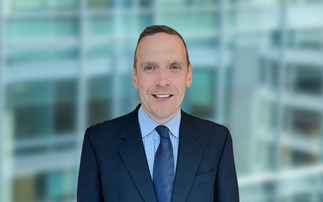Fund houses must recognise the weaknesses of ESG and embrace dissent, says Deutsche Asset Management's Stuart Kirk.
Nothing is buzzier than ESG right now. Global assets managed to environmental, social and governance objectives have surged past $20tn, and three times as much is signed up to follow. This is fantastic news. But rather than disappearing into a bubble of self-congratulation, the ESG movement must acknowledge that some investors remain unconvinced.
Why are they sceptical and how can the industry win them round? The most common criticism of ESG is inconsistency. For starters, there is the problem of defining bad and good. Why exclude tobacco stocks from portfolios and not food companies that overload meals with sugar, salt and saturated fat?
Likewise, diversity is a significant ESG issue, and rightly so. But why not work-related stress, which accounts for half of all sick days? Coal-fired power stations versus nuclear? Both have risks. Some investors think weapons manufacturers are agents of war. Others believe in a nation's right to defend itself.
Sceptics also point to inconsistent boundaries. Today, companies have long supply chains and globalisation connects everything. When it comes to assessing right and wrong behaviour, the criticism goes, no one seems to agree on where to stop.
If a coal miner pollutes the air, where does that leave the truck company transporting the coal? Or the tyre maker supplying the trucks? What about the rubber manufacturer? Is a bank's commodity trading desk complicit? Or the technology company providing the trading software?
As if answering such questions were not hard enough, consensus opinions keep changing. This is often because knowledge evolves. Science proved the link between smoking and cancer, and our understanding of the impact of carbon emissions increases every year.
But views and norms change for random reasons too. ESG holdouts reckon it is pointless to alter behaviour based on values that may not apply in future. What if the current focus on corporate governance is a luxury born of record-high equity markets and prolonged economic growth? In five years we may be obsessing about something else.
Another popular charge against ESG is hypocrisy. It is easy for sceptics to ask: "Who are you to talk?" Companies can justify ignoring pressure from lobbyists if the latter are not practising what they preach. Likewise, clients are less likely to respond to asset managers that are prone to poor governance, diversity issues, excessive pay and conflicts of interest.
The last reason some sceptics refuse to engage is that ESG may result in negative unintended consequences. It is a weak excuse, given that every action has unintended consequences. But the argument is that ESG investing can distort markets, which leads to malign incentives and a sub-optimal allocation of capital.
Promoting electric cars is a good idea, for example. However, some of the biggest makers of lithium batteries have questionable governance records.
And a lot of the cobalt in cathodes comes from a country tainted by child labour and powerful warlords.
So how should asset managers respond to sceptics? The best way is to welcome criticism with humility and not proselytise. Sustainable investing will always involve value judgments. No one has all the answers and there is so much still to learn. Research is key. Only by improving our understanding can ESG move forward.
This, in turn, requires better data, more computational power, and innovative approaches to solving problems. Sophisticated ranking engines can now calculate ESG scores for companies, sectors or complete indices, mitigating some of the potential inconsistencies.
Fund managers must lead by example. That means explicit ESG targets — with senior executives held accountable — and transparency. Addressing hypocrisy alone could have a huge positive effect on the environment, society and governance, as companies strive to outdo each other in terms of best practice.
Mitigating the problem of unintended consequence is harder, but an openness to be flexible based on research and trial and error is the way to go.
For many ESG issues there is no rush. Trial, observe, implement, monitor, adapt — that is how to introduce ESG goals. Smart analysis can also suggest where to look for negative consequences.
No movements endure if they eschew criticism and debate. While it is fantastic that ESG investing is spreading fast, it must recognise its weaknesses and embrace dissent. Long-run success comes from responding to sceptics and then welcoming new ones.
Stuart Kirk is head of Deutsche Asset Management's Global Research Institute











